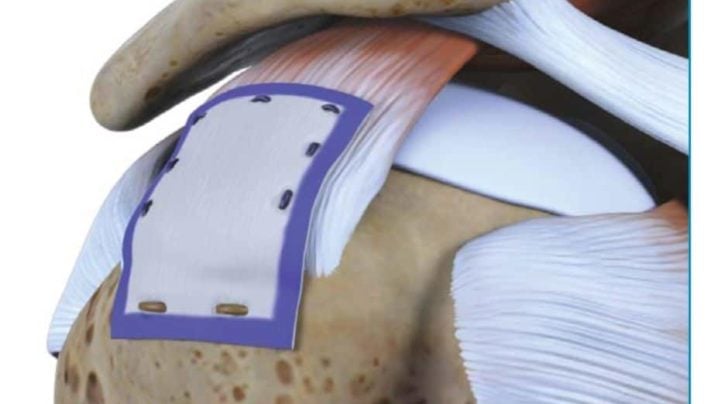
Rotator cuff tendinosis is a very common cause of shoulder pain in the adult population. By definition, rotator cuff tendinosis means that your rotator cuff tendons are starting to show their age. In other words, the rotator cuff is starting to degenerate or wear out. Most rotator cuff tears are due to this degeneration or wearing out of your rotator cuff tissue. Many people with rotator cuff tendinosis have severe pain at night. Until recently there were very few good surgical options for people with rotator cuff tendinosis. With a recent invention, surgery might be able to cure rotator cuff tendinosis. Before we review a promising new procedure to treat tendinosis, let’s consider the following.
There are many potential causes of your rotator cuff tendinosis:
- Age
- Genetics
- Overuse
- Various overhead activities
Most of you with rotator cuff tendinosis have severe pain on the side of your arm. Reaching into the back seat of your car is brutal. Rotator cuff tendinosis also causes severe night pain in the shoulder and can lead to many sleepless nights.
Once rotator cuff tendinosis is present and your rotator cuff begins to degenerate, the rotator cuff can go on to tear more easily. Initially, only a small portion of rotator cuff may separate from the bone. We will call that a partial thickness rotator cuff tear. As rotator cuff tendinosis progresses further, the rotator cuff tendon may continue to tear, thus leaving you with a full thickness rotator cuff tear. The graphic below shows the progression of rotator cuff tendinosis to a full rotator cuff tear.
 What Is The Treatment For Rotator Cuff Tendinosis?
What Is The Treatment For Rotator Cuff Tendinosis?
Initially, non-surgical management is started to address your pain and improve your quality of life. Many people with rotator cuff tendinosis can be successfully treated with:
- Physical Therapy
- Anti-inflammatory medications
- Activity modification and rest
- A cortisone or steroid injection
A small percentage of you will not improve with the these treatments. Your shoulder continues to hurt and your quality of life is poor. What other treatments can we offer you?
Can Surgery Cure Rotator Cuff Tendinosis?
Millions of patients suffer from rotator cuff tendinosis and a significantly affected quality of life. You’re not sleeping well, you have a hard time working and you can no longer play ball with your children.
Before the development of a recent patch to try and regenerate a degenerative rotator cuff our approach to the surgical management of rotator cuff disease was “mechanical”. That means that we put a camera into your shoulder and were able to remove the inflamed tissue or bursitis, and possibly any bone spurs that were present. The problem used to be that we couldn’t do anything to try and reverse or repair the tendinosis.
Rotator cuff tendinosis is truly a disease, it is a BIOLOGICAL problem. Our rotator cuff tissue is degenerating; and nothing we did previously addressed the underlying change in the biology of the tendon. By removing the inflamed tissue, we simply dealt with the effects of the tendinosis, and not the tendinosis itself. That is why surgery to remove bone spurs and inflammatory tissue alone had mixed results.
This new procedure enables us to arthroscopically (minimally invasive) place a “bioinductive” patch over the area of rotator cuff tendinosis or even a partial rotator cuff tear. The research shows that over time the patch can regenerate the rotator cuff tendon. We finally have a BIOLOGICAL means of treating your shoulder pain. Some early research shows the patch is healing degenerative rotator cuff partial tears and tendinosis.
How Does The Rotator Cuff Patch Work?
Once that patch is in position on the rotator cuff it begins to “induce” the rotator cuff to repair or regenerate itself. This has been shown to lead to healing of partial thickness rotator cuff tears, and potentially reverse the degenerative changes. For those of you with rotator cuff tendinosis, but no tear — it is possible that this bioinductive patch could prevent your rotator cuff from degenerating further into a situation where you now have a partial rotator cuff tear.
The graphic below shows that patch in place and the healing of the tendinosis and a partial rotator cuff tear.
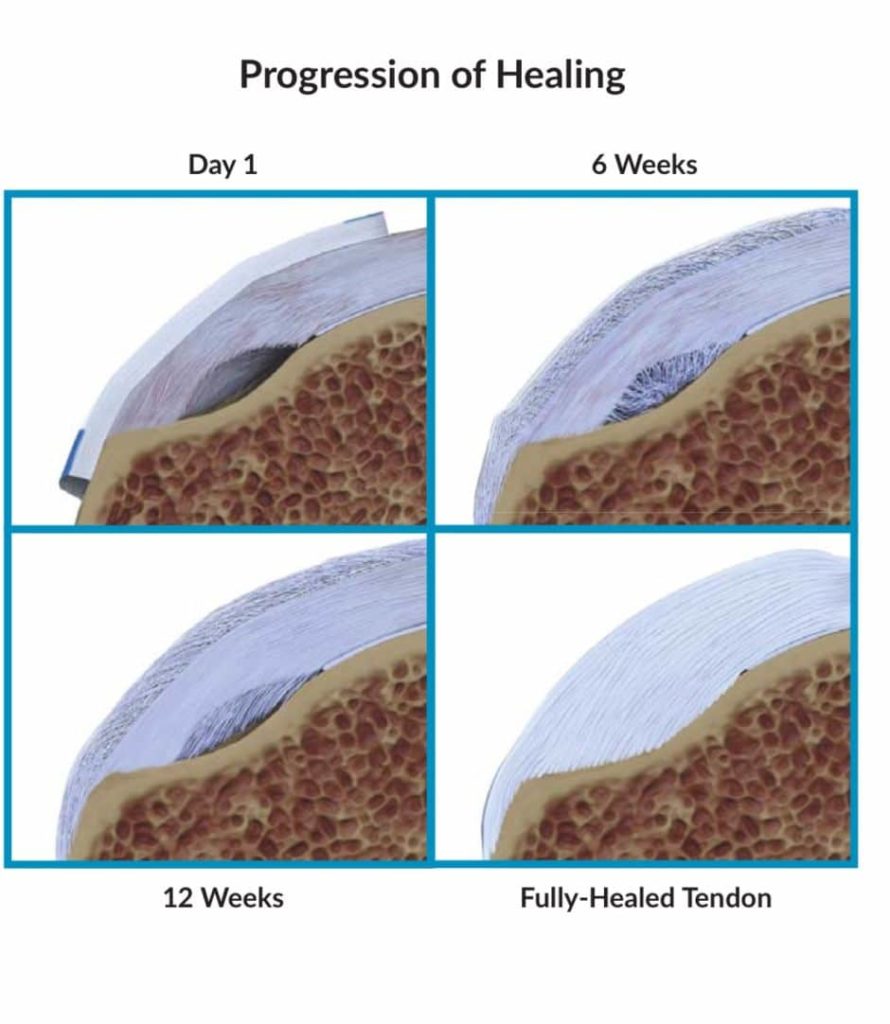
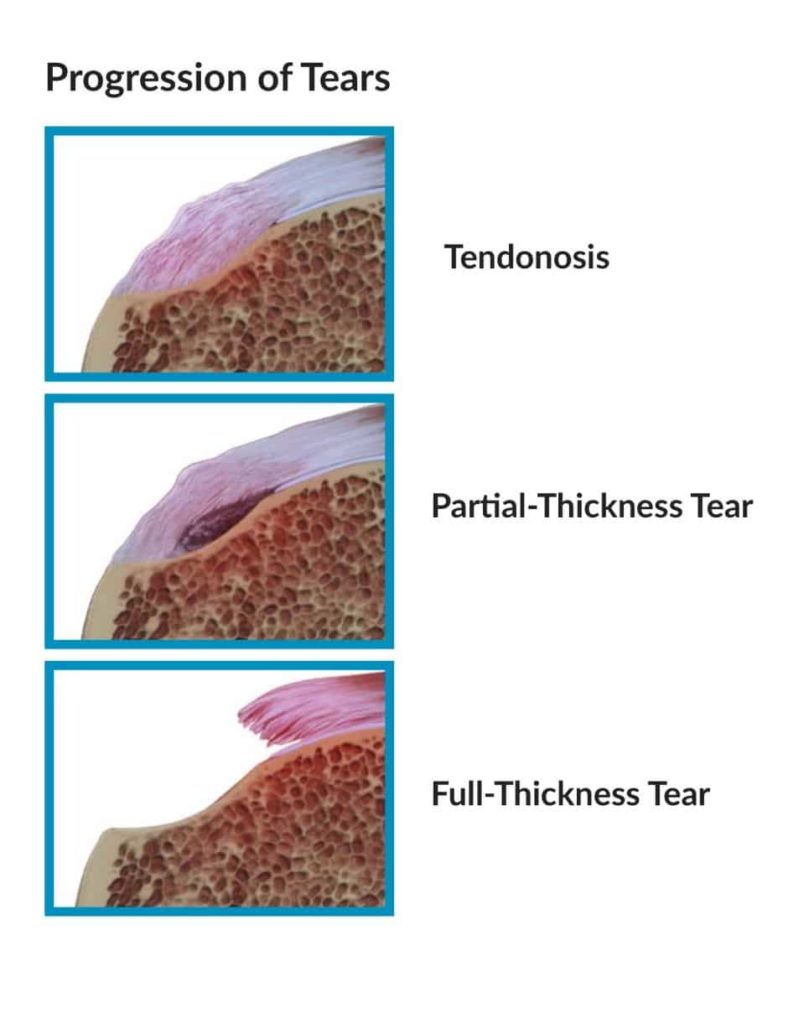
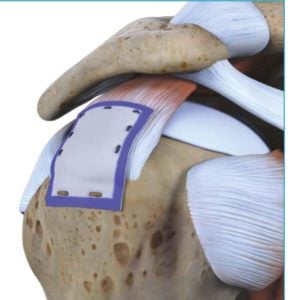


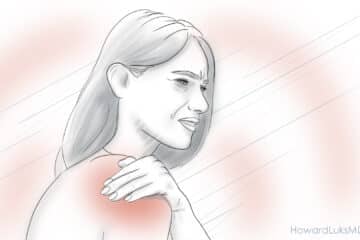

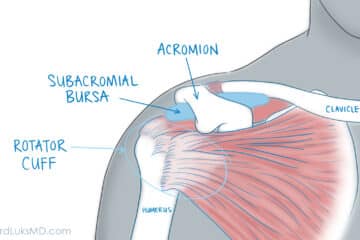
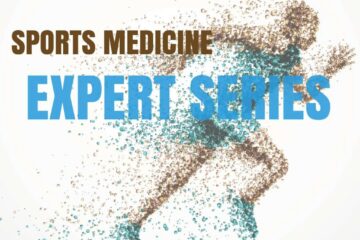




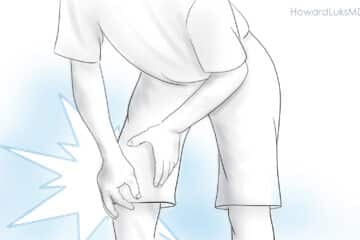


Dr Luks, I have severe pain in my R shoulder at rest, and with certain movements. I have been diagnosed with the following after MRI: 1. severe tendinopathy of distal of supraspinatus and infraspinatus tendon with focal high-grade, partial thickness tear of of bursal surface of ant supraspinatus tendon extending to greater tuberosity, but not clearly extending to articular surface; 2. severe tendinopathy and chronic appearing mod grade partial-thickness tear of articular surface of distal suprascapularis tendon; 3.Mild lateral downslope of acromion and small subacromial enthesophyte causing mild narrowing of supraspinatus outlet – likely cause for rotator cuff impingement; 4. severe acromioclavicular joint osteoarthritis.
Couple of questions if I may. Do you believe the Rotator Cuff Patch would be beneficial in my case? Is it accepted by most insurance companies? Which company manufactures the Patch? Thank you
That is a very common age-appropriate MRI interpretation. Despite those findings, it doesn’t mean that those changes are the cause of your pain. Many, many people have similar changes and no pain. Figuring out what the cause of your pain is can be challenging… but if successful can determine what your “best” options are. There’s no doubt and no debate that physio or PT is the first line of treatment for everyone with these changes when your doc thinks that the pain is caused by your rotator cuff. If and only if non-surgical treatment is ineffective do we consider moving to surgery as an option. The patch may or may not be a worthwhile consideration in the future. It is made by Smith and Nephews.
Hi Dr. I am having tightness but not pain and movement of shoulder is also good in my right shoulder for about 2 months.I also hear sound and feel something is clicking inside when i move my shoulder. I visited doctor and done x ray and ultrasound. ultrasound says” the supraspinatous tendon is bulky and heterogeneously hypoechoic, suggestive of tendinosis. Focal hetero-echogenicity is also seen in subscapularis tendon, suggestive of tendinosis.” The doc told to do Physiotherapy and i am doing that from 1 month but the improvement is not as such. As i told you there is no pain but i feel the muscle tightness around the shoulder and it irritates me a lot. So doc please suggest me that should i continue physiotherapy or there is surgery or steroid injection required for that. Before this happened i was going gym regularly. How much time physiotherapy take generally to heal this type of injury. Please doc help i am getting depressed because of this.
Keep going… it will take a few months of motion exercises to improve your stiffness or tightness.
Hi Dr. I have been having severe shoulder pain and my x ray results are suspected calcified tendonosis of infraspinatus. Can a regular xray show the difference between this and calcific tendonitis? I am hoping this goes away on it’s own with the body reabsorbing the deposits. Is the treatment any different for this condition? Thank you
Calcific tendonitis and tendinosis are the same. The treatments are similar too. If the pain isn’t severe most people will choose to wait for their body to dispose of the calcium.